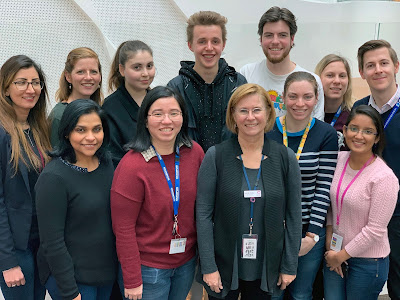Lab Spotlight: Trowbridge Lab

Each month, Simply Blood spotlights a lab focused on the research of basic hematology, immunology, stem cell research, cell and gene therapy, and other related aspects. Get to know these different labs around the world! This month, we are featuring the Trowbridge Lab at the Jackson Laboratory in Bar Harbor, ME. How long have you had your lab? 7 years How many members make up your lab? Students/postdocs? We currently have 2 postdocs, 1 Ph.D. student, 1 intern and 2 research assistants. What is the major research theme of your lab? My lab focuses on the biology of hematopoietic stem cell aging and understanding why aging is the major risk factor for developing clonal hematopoiesis and hematologic malignancy, specifically focusing on myelodysplastic syndrome (MDS) and acute myeloid leukemia (AML). What is the most exciting project in your lab right now? This is like asking which of my children is my favorite! Of course, they are all exciting! In my lab, we regularly re-...











